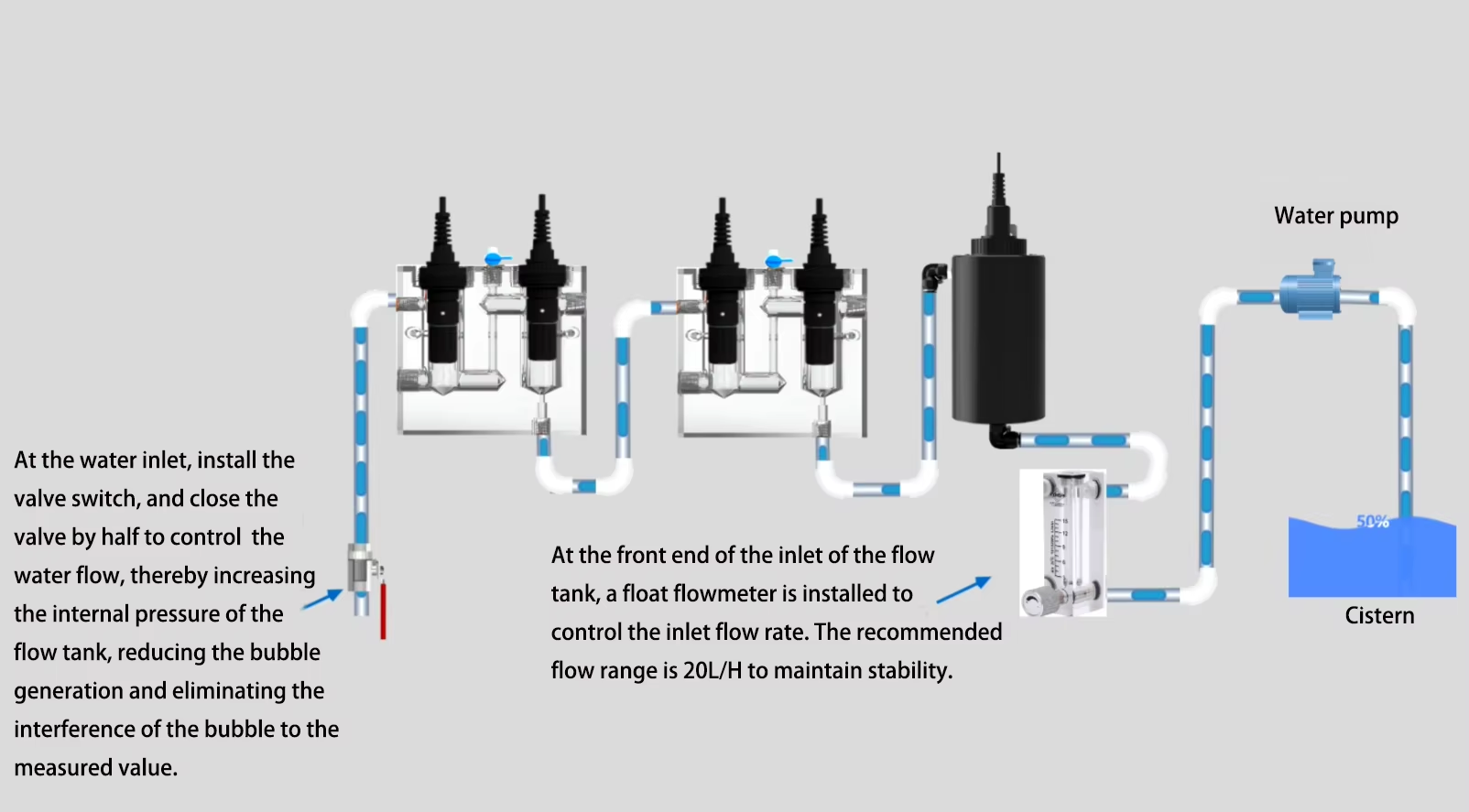Датум: 9. јануар 2025.
Локација: Лима, Перу —Како потражња за одрживим аквакултурама расте на глобалном нивоу, увођење сензора за константни притисак резидуалног хлора трансформише праксе у индустрији. Ови напредни системи за праћење, који обезбеђују оптималан квалитет воде у аквакултурним окружењима, добијају на замаху у Перуу, Сједињеним Државама и другим земљама, означавајући значајну промену у начину узгоја рибе и морских плодова.
Хлор се често користи у аквакултури за дезинфекцију воде, спречавајући ширење патогена и осигуравајући здравље водених врста. Међутим, изазов је био одржавање одговарајућих нивоа хлора без ризика од токсичности за рибе. Ту долазе до изражаја сензори резидуалног хлора са сталним притиском. За разлику од традиционалних система за праћење, који пружају само периодична очитавања, ови сензори нуде континуиране податке о нивоима хлора у реалном времену, омогућавајући пољопривредницима да изврше тренутна прилагођавања по потреби.
У Перуу, где је аквакултура постала витални део економије, усвајање ових сензора се показало посебно корисним. Многе перуанске фарме рибе, посебно оне фокусиране на шкампе и тилапију, пријавиле су повећање стопе преживљавања и квалитета производа од интеграције сензора резидуалног хлора под сталним притиском. „Видели смо смањење стопе смртности риба до 30% од инсталирања ових сензора“, рекао је Едуардо Моралес, власник фарме шкампа у Пјури. „Повратне информације у реалном времену нам омогућавају да брзо реагујемо на промене у квалитету воде, што је кључно.“
Предности ових напредних сензора нису ограничене само на Перу. У Сједињеним Државама, аквакултурне операције дуж обала такође примењују ову технологију. Мајкл Џонсон, морски биолог и консултант за аквакултуру са седиштем на Флориди, објаснио је: „Уз стално праћење, фарме могу да оптимизују употребу хлора, смањујући трошкове и минимизирајући утицај на животну средину. Ово је кључно јер потрошачи све више захтевају транспарентност и одрживост у производњи морских плодова.“
Штавише, земље у југоисточној Азији и Европи такође сведоче предности ових сензора. У Вијетнаму, где индустрија шкампа цвета, фармери усвајају технологију која омогућава боље управљање нивоима хлора, што доводи до побољшане безбедности производа и смањења отпада. У међувремену, европске фирме за аквакултуру користе сличну технологију како би испуниле прописе ЕУ о хемијским остацима у производима од морских плодова.
Упркос позитивном пријему, стручњаци напомињу да ће широко усвајање захтевати образовање и улагања у обуку оператера аквакултуре. „Сама технологија је једноставна, али разумевање како тумачити и деловати на основу података које она пружа може бити изазов за неке пољопривреднике“, рекла је др Сара Тело, истраживачица аквакултуре на Универзитету Флориде. „Радионице и демонстрације биће кључне у помагању пољопривредницима у различитим регионима да искористе ову технологију.“
Интеграција сензора резидуалног хлора под константним притиском такође отвара врата за даљи напредак у праћењу квалитета воде. Истраживачки тимови већ истражују могућност комбиновања ових сензора са другим алатима за праћење животне средине, као што су сензори pH, температуре и амонијака, како би се створили свеобухватни системи за праћење квалитета воде.
Како индустрија аквакултуре настоји да уравнотежи ефикасност производње са утицајем на животну средину, технологије попут сензора за константни притисак резидуалног хлора постају неопходне. Сарадња између пољопривредника, истраживача и добављача технологије биће кључна у обликовању будућности одрживих пракси аквакултуре широм света.
За земље попут Перуа и Сједињених Држава, ова трансформација није само питање повећања продуктивности, већ и обезбеђивања средстава за живот милиона људи који зависе од аквакултуре, осигуравајући им да могу напредовати на стално захтевном глобалном тржишту.
За више информација о сензору квалитета водеинформације,
Молимо контактирајте Honde Technology Co., LTD.
Email: info@hondetech.com
Веб-сајт компаније: www.hondetechco.com
Време објаве: 09. јануар 2025.


